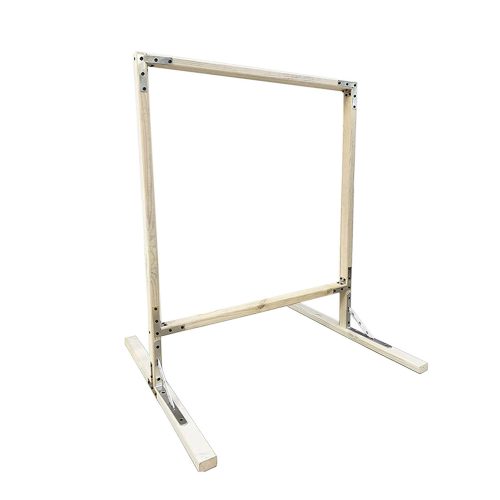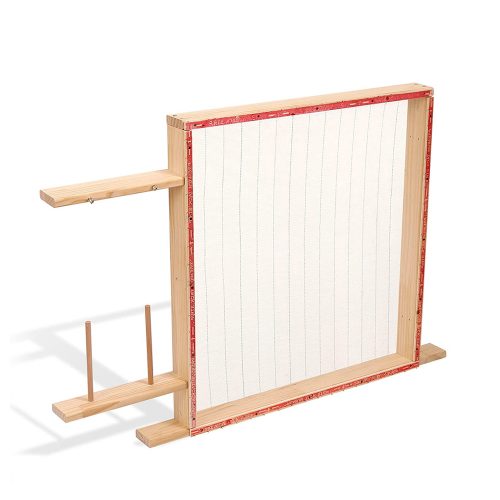BEST TUFTING FRAME COLLECTION FOR YOU
- Best Brands
Piwerod
Colcolo
Artufting
Yalikop
- 5 pieces of lumber (2" x 3" x 96")
- 24 feet of carpet tack
- 2.5-inch long screws
- 1.25" long screws
- Wood glue/staples/staples
- One drill bit
- A hammer
For this rug tufting frame, we recommend purchasing two packs of carpet adhesive (3 strips per pack, 4 feet long). Although some come pre-assembled with nails, we also recommend adding wood glue.
1. Cut the ends of the four pieces of wood at a 45-degree bevel. (Frame)
2. Divide the fifth plank into two 24", two 16" and two 8" pieces. You should also cut the 8" plank at a 45-degree angle at each end. (Framing Legs)
3. Lay the pieces of the frame on the ground. Screw the four corners of the frame together with 2.5-inch long screws.
4. Using the six pieces of lumber from Step 2 and 1.25-inch screws, make two T-leg brackets. Attach them to the bottom of the frame and stand the frame upright.
5. Cut the carpet into four strips (70-72 inches). If you don't have enough tack, the gap between strips should not be more than three inches long.
6. Using a stapler, or wood glue and staples, attach the tack strips to one side of the frame. The nails should be facing you and pointing toward the centre of the frame.
If you prefer a video, click here .
We recommend that you use a polyester cloth with a weft count of 14 or more. In addition, you need to make sure the weave of the fabric is loose enough. You should not use canvas, muslin and other woven fabrics because these weaves are often too dense, and the fabric is too light and will tear.
- Acrylic yarn
- Cotton yarn
- Wool yarn
This chart shows common sizes.
1. Cloth size:1 yard (91cm x 4 m)
- Tufting frame dimensions:76cm x 76cm/122cm x 76cm
- Number of tufted pieces:Four/Three
2. Cloth size:2 yards (182cm x 4m)
- Frame size:167cm x 76cm/167cm x 111cm
- Number of tufted pieces:Four/Three
3. Cloth size:3 yards (274cm x 4m)
- Frame size:244cm x 111cm/244cm x 183cm
- Number of tufted pieces:Three/ Two



